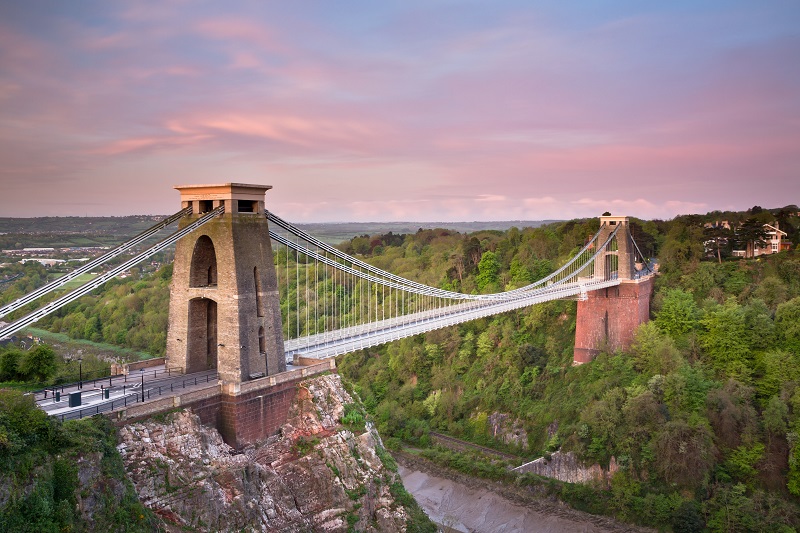Ashton Court
Ashton Court is a mansion house and estate owned by the City of Bristol, although it technically lies in North Somerset. It is a popular day out for Bristolians, and the parkland is the perfect place to enjoy some fresh air.
A manor house has stood at Ashton Court since the 11th century: the estate is referred to in the Domesday Book. It was considerably expanded in the 14th century, and eventually sold to Sir Giles Daubeney, one of Henry VIII’s chamberlains, in 1506. It later passed to the Smyth family, who made use of the Dissolution of the Monasteries to purchase surrounding lands, which had previously been owned by Bath Abbey.

Clifton Suspension Bridge
The iconic Clifton Suspension Bridge is synonymous with Bristol: as magnificent as the day it was made, it’s a popular spot for locals and tourists alike.
The first bridges across the Avon in Bristol date back to the 13th century (if not earlier), and as traffic increased and resentment at the tolls charged to cross bridges grew, it became clear Bristol’s bridge problem wasn’t going to go away. In 1753, a Bristol-based merchant, William Vick, left a bequest of £1000 to the city to build a stone bridge between Clifton Down and Leigh Woods.

Tyntesfield House
Tyntesfield is a Victorian Gothic revival style house, just outside Bristol, United Kingdom. It was bought by the National Trust in 2002, and the house and gardens have been open to visitors ever since.
The house gets its name from the Tynte family, who originally owned the land it was built on. In 1843, William Gibbs, a businessman who had made a fortune importing guano as fertilizer, bought the house and surrounding land. Although he and his family were primarily London based, he travelled to Bristol for business frequently and decided he needed a base near the city.

SS Great Britain
The SS Great Britain was a passenger steamship designed by Isambard Kingdom Brunel: she was the first iron steamer to cross the Atlantic. Today, she is a museum ship residing on the harbourside in Bristol, United Kingdom.
The SS Great Britain was launched in 1843: designed by the pioneering engineer Isambard Kingdom Brunel, the ship was the biggest of her kind, with a new screw propeller, 1000 horsepower steam engine and made of iron. Prince Albert officially ‘launched’ the ship, boarding the ship and inspecting it on a tour. The ship was described by contemporaries as ‘revolutionary’ in its design.

Cabot Tower
Cabot Tower is a 32m commemorative tower atop Brandon Hill, in Bristol, United Kingdom. Constructed in the late 19th century as part of the 400th commemoration of John Cabot, an explorer who set sail from the port of Bristol in the Matthew, and who ‘discovered’ Newfoundland/Canada. Cabot remains a prominent name across Bristol’s urban landscape (look out for his name appearing on road names!), but his legacy has become more complex in the modern day and age.

Blaise Castle Museum and Estate
Blaise Castle Museum and Estate is a Humphrey Repton designed landscape in in North Bristol, with a house, castle and folly on its grounds. It remains a popular spot for Bristolians at weekends as an escape from the centre of the city.
The area around Blaise Castle has been probably been inhabited since Neolithic times – there’s definitely evidence of settlements from the Bronze Age onwards. It formed part of the Kingdom of Mercia prior to the Norman Conquest, and during this time, it gained its name: a chapel to Saint Blaise was constructed.

M Shed
M Shed is a museum on Bristol’s harbourside, which tells the story of the city’s development from medieval port to modern day urban hub. Bristol’s Wapping Wharf has long been an important part of the city’s maritime activities. Cargo sheds have lined the quayside for centuries – many of these were destroyed during the Blitz. After the war, the local authority invested in rebuilding the area, but as dockyard commerce declined during the 1950s and 60s, the huge warehouses became redundant.

